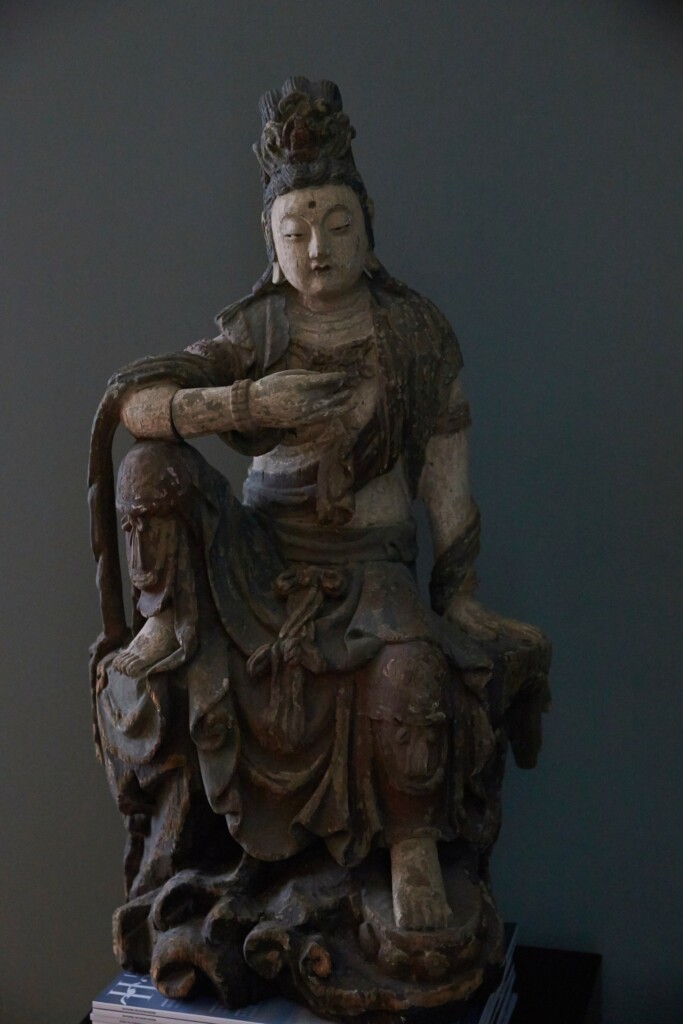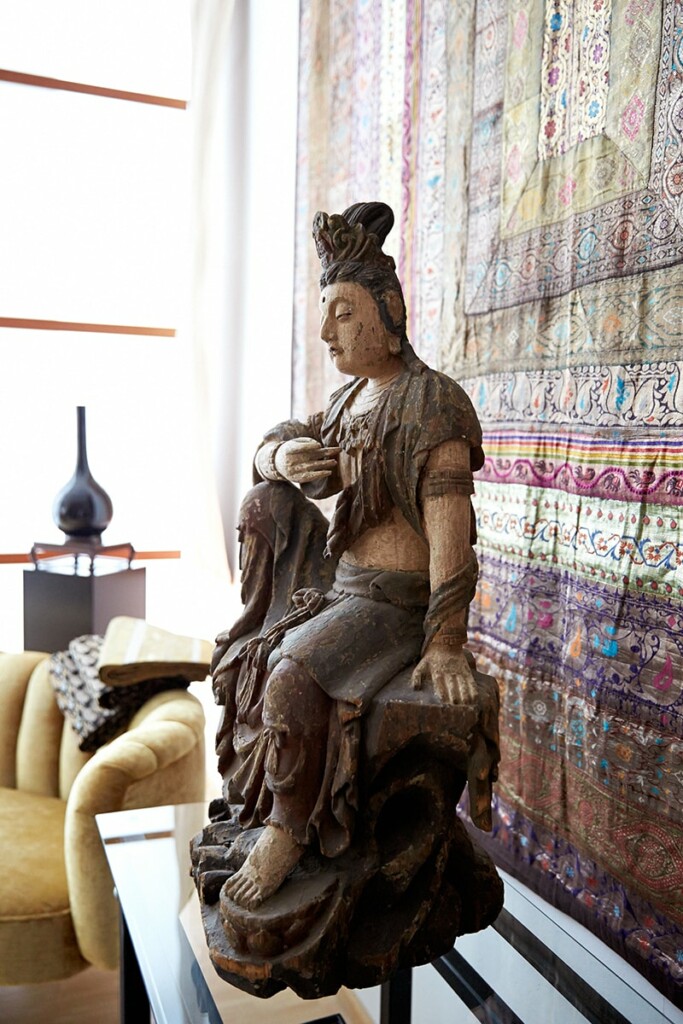Uncategorized
A decorative centre piece with a story to tell

In East Asian Mahayana Buddhism, the Guanyin is a female bodhisattva of compassion. She is one of the most worshiped deities in the Buddhist tradition, and was originally the male bodhisattva Avalokiteshvara. Also known as Quan Yin, Kuan Yin, Quan’Am (Vietnam), Kannon (Japan), and Kanin (Bali), she is the embodiment of loving kindness. Beloved as a mother figure and divine woman who is intimately involved in the daily affairs of her devotees, Kuan Yin’s role as the Buddhist Madonna has often been compared to that of Mary, the mother of Jesus in the western world.
Numerous legends tell of miracles of how the Guanyin helps those who call upon her. Today she is worshipped by Taoists as well as Mahayana Buddhists – especially in Taiwan, Japan, Korea and once again in her native China, where practising Buddhism was suppressed by the communists during the Cultural Revolution (1966-69).
The serenity and kindness embodied by Guanyin is also reflected in her posture: the bent leg and the relaxed hand position are characteristic features when depicting Guanyin, giving her a majestic appearance.
This particular work of art was carved out of wood in China in the 1760s and partially painted with natural colours. Due to its unique charisma, this Guanyin lends itself as an eye-catcher or centre piece, for instance in a meeting room or a foyer, a living room or a lounge, effusing a friendly atmosphere. Such staging can be very simple, yet a more decorative mise-en-scène can also be created in combination with a screen or dramatic fabric as a background thus taking full effect of the figure’s powerful radiance.

